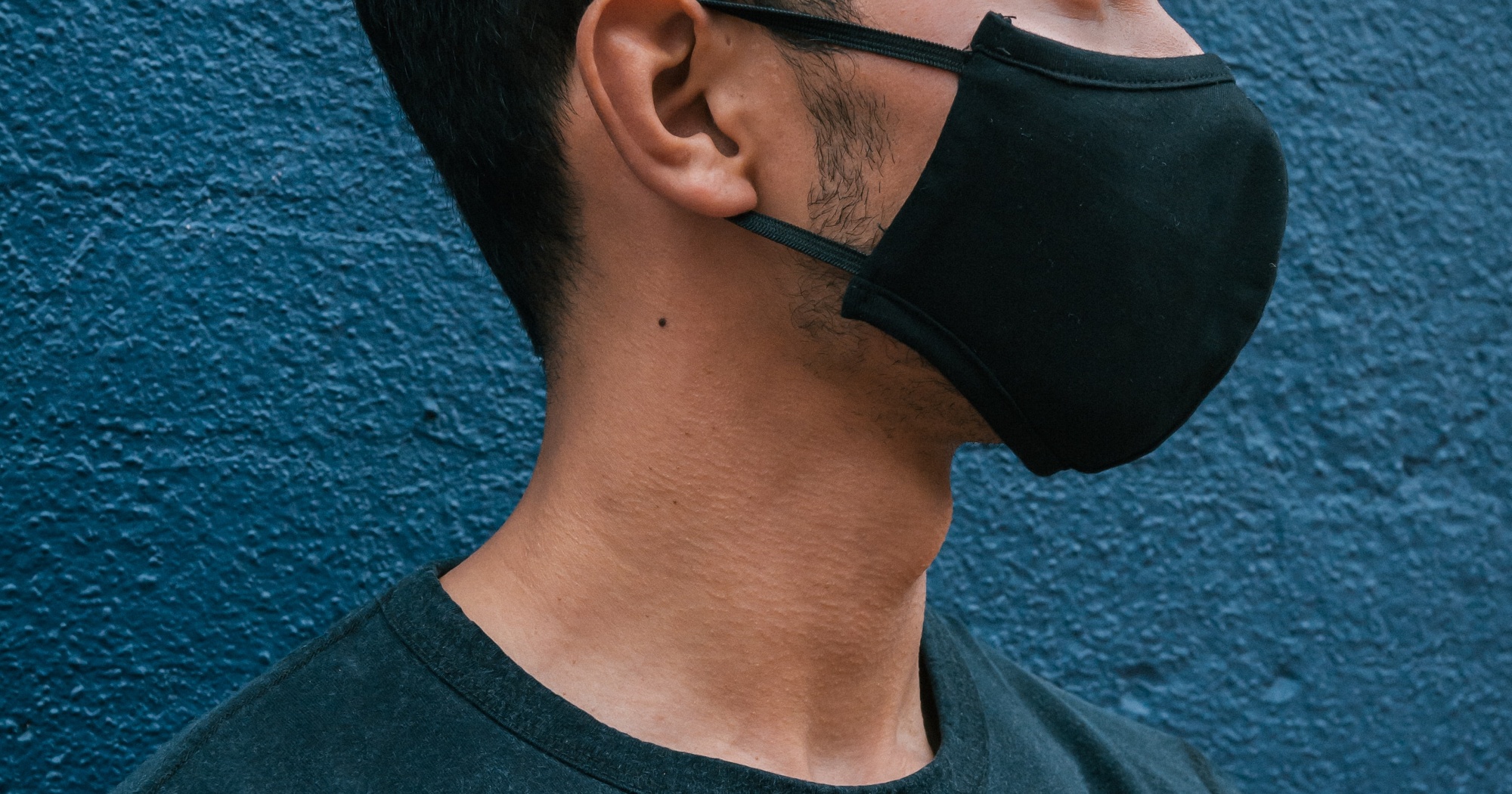The Singapore government has updated its guidance for the use of face masks, in response to the emergence of more infectious virus variants seen in Singapore.
Members of the public are now recommended to use masks with good filtration capabilities.
As a mask wearer (and recipient of many free face masks) for more than a year now, you might be wondering: Does my face mask actually work?
First, a quick primer on how a face mask works
SARS-CoV-2, the virus which causes Covid-19, replicates in our respiratory tract. Whenever an infected person talks, sneezes, breathes, sings, or cough, they release respiratory particles which contain the virus.
These particles range from the visible flecks of spittle to aerosol droplets which are invisible to the naked eye.
They are infectious and so if these particles were to land on someone else's mouth or nose and get inhaled, that's how the virus is transmitted.
Wearing a mask puts up a physical barrier to catch large droplets, preventing an infected person from transmitting the virus to those around them.
We've been wearing masks for over a year, what's different now?
You might have read about the recent Covid-19 clusters.
The Singapore government attributes this to new variants which transmit the virus more easily.
As of early May, Singapore has detected at least 10 different Covid-19 variants in local and imported cases of Covid-19 infection.
For example, B.1.617, which was first detected in India, was found in three cases at Changi Airport terminals.
Of note though, is one of B.1.617's subtypes: B.1.617.2.
This subtype has been linked to the clusters at Tan Tock Seng Hospital, Tuas South Community Care Facility, and the Immigration and Checkpoints Authority.
B.1.617.2 is thought to be about 50 per cent more transmissible than the UK strain (B.1.1.7). The UK government has declared the B.1.617.2 subtype a variant of concern in the United Kingdom, after B.1.617.2 infections in the country jumped from 202 to 520 in one week.
Aside from B.1.717 and B.1.1.7, other variants were detected in Singapore, including B.1.351 (first detected in South Africa), and P1 (first detected in Brazil).
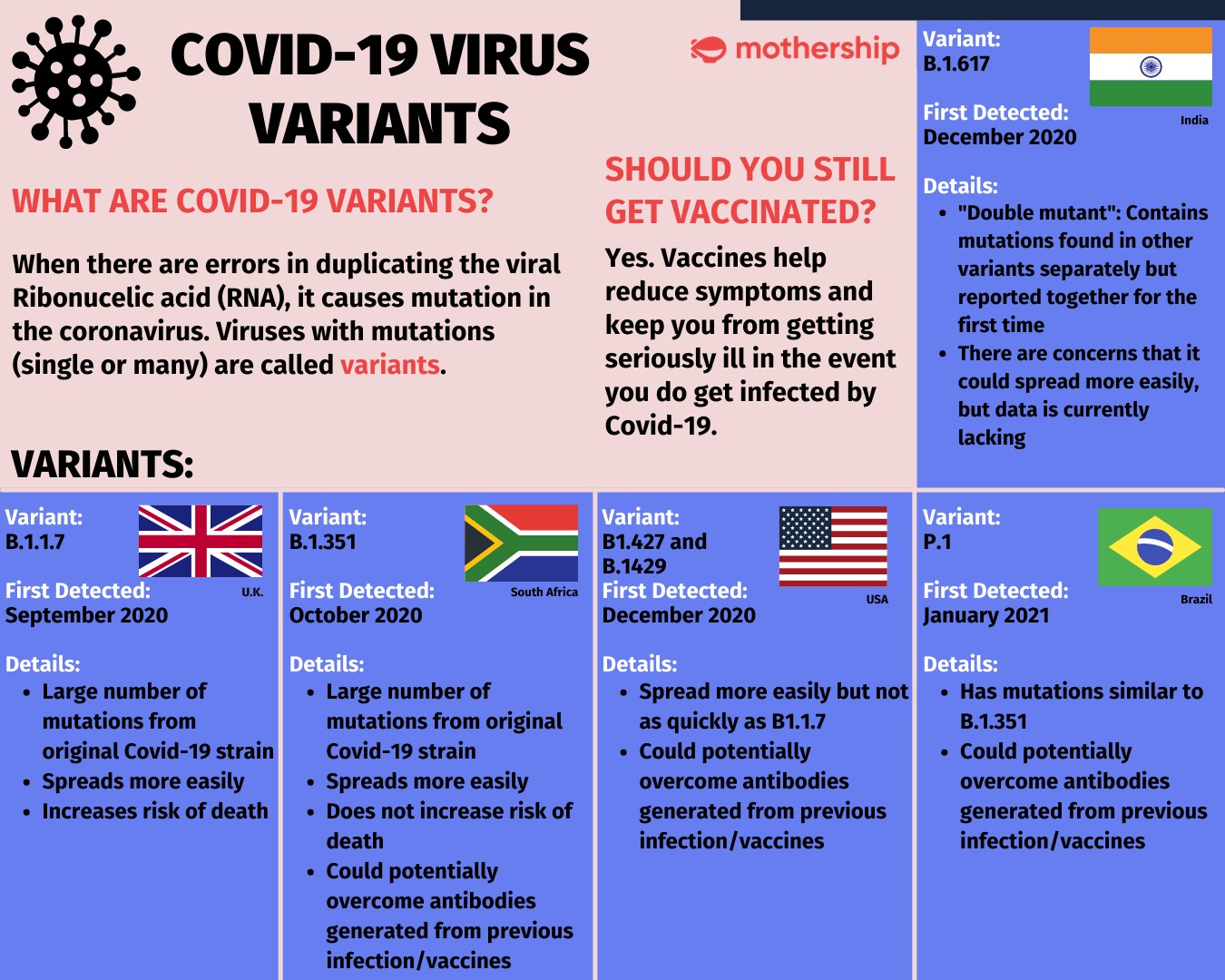
Most of them have increased transmissibility, which makes infecting a population much easier. This makes putting on a good quality mask — and wearing it properly — all the more important.
Previously, a mask was defined as a covering which is made of paper, plastic or textile and is solely designed to be worn over the nose and mouth as protection against infection or air pollution.
This meant that you could still use those cheap and cute masks that can be bought online — which typically have more aesthetic than practical value.
Now though, because of the emergence of more infectious virus variants, the Ministry of Health recommends that you wear one with at least 95 per cent filtration efficiency. These are much better at filtering infectious droplets.
OK, so can I continue using my reusable masks?
Yes, but use reusable masks that are made of at least two layers of fabric. Ideally, the two layers should serve different functions, like repelling fluids, virus filtration and absorbing moisture from one’s breath.
Those that have been distributed by the government — DET30, Livinguard, and Proshield — are adequate for use. Some even have pockets for additional filters.
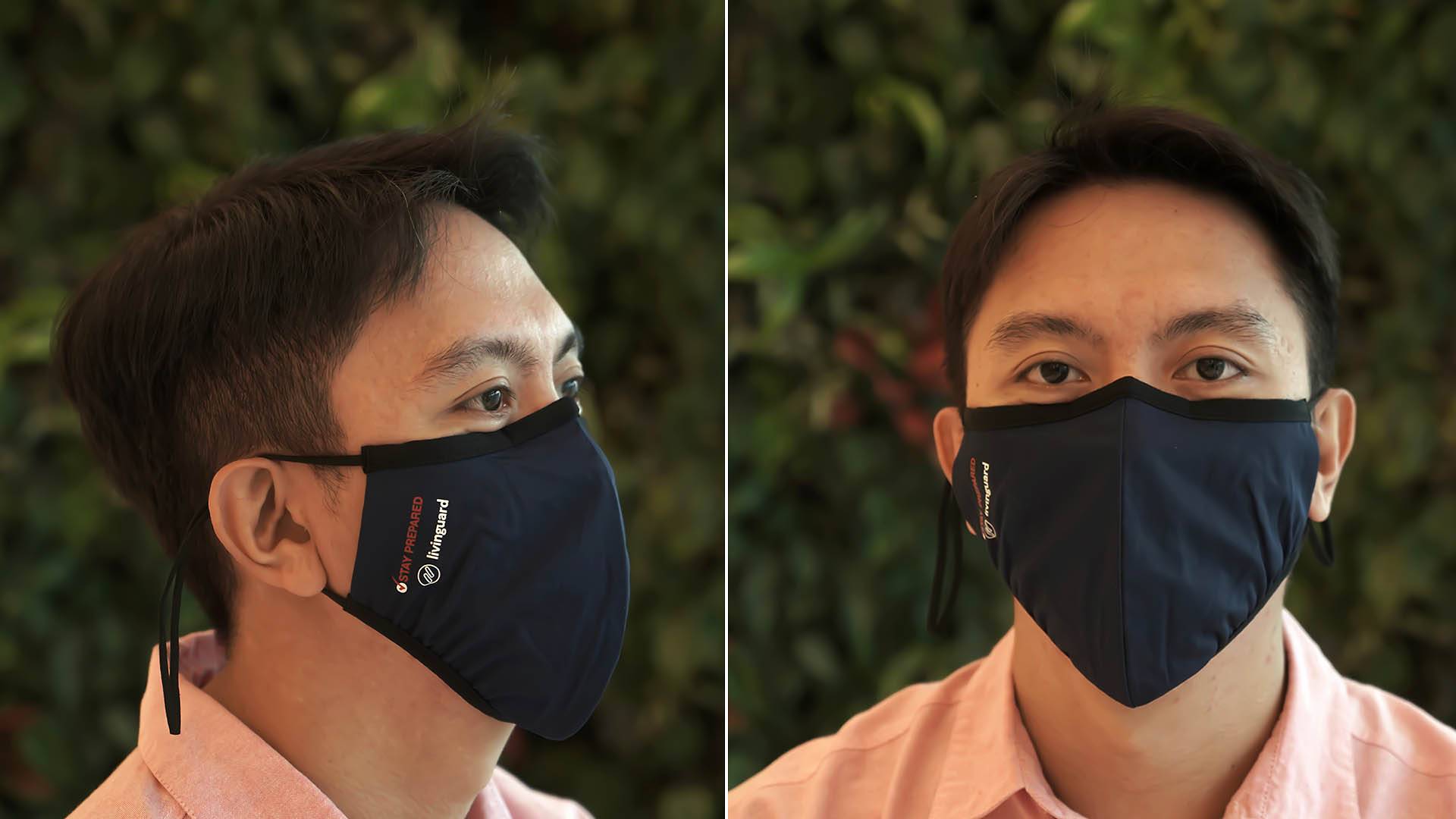 Via Temasek Foundation.
Via Temasek Foundation.
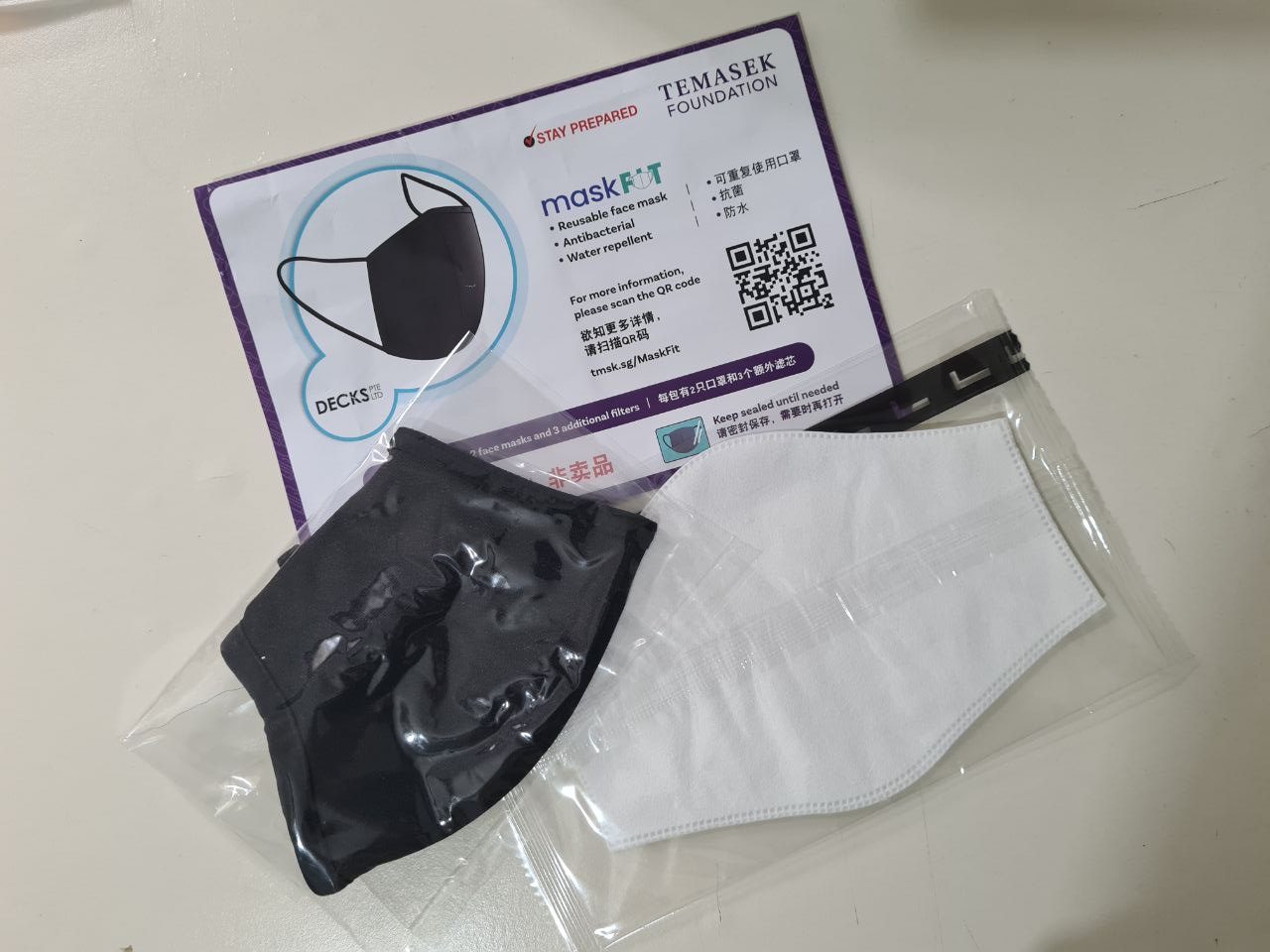 One of the masks distributed by Temasek Foundation comes with extra filters. Image by Joshua Lee.
One of the masks distributed by Temasek Foundation comes with extra filters. Image by Joshua Lee.
Speaking of the government-issued masks, there are very specific steps that wearers must take to ensure that the antibacterial properties of the masks last as long as they should — typically for about 30 washes.
These steps include soaking used masks in gentle soap and lukewarm water and rinsing in clean water. Avoid rubbing, scrubbing, or wringing them, and do not tumble dry them.
Filters in reusable masks should be changed regularly.
I'm not a fan of reusable masks. What if I want to wear surgical masks?
If you want to stick with surgical masks, take note that a good quality surgical face mask should have a three-ply layer, according to HealthHub:
- An innermost layer used for absorbing moisture
- The middle layer which is a filter
- The outermost layer (typically the coloured side) which repels water
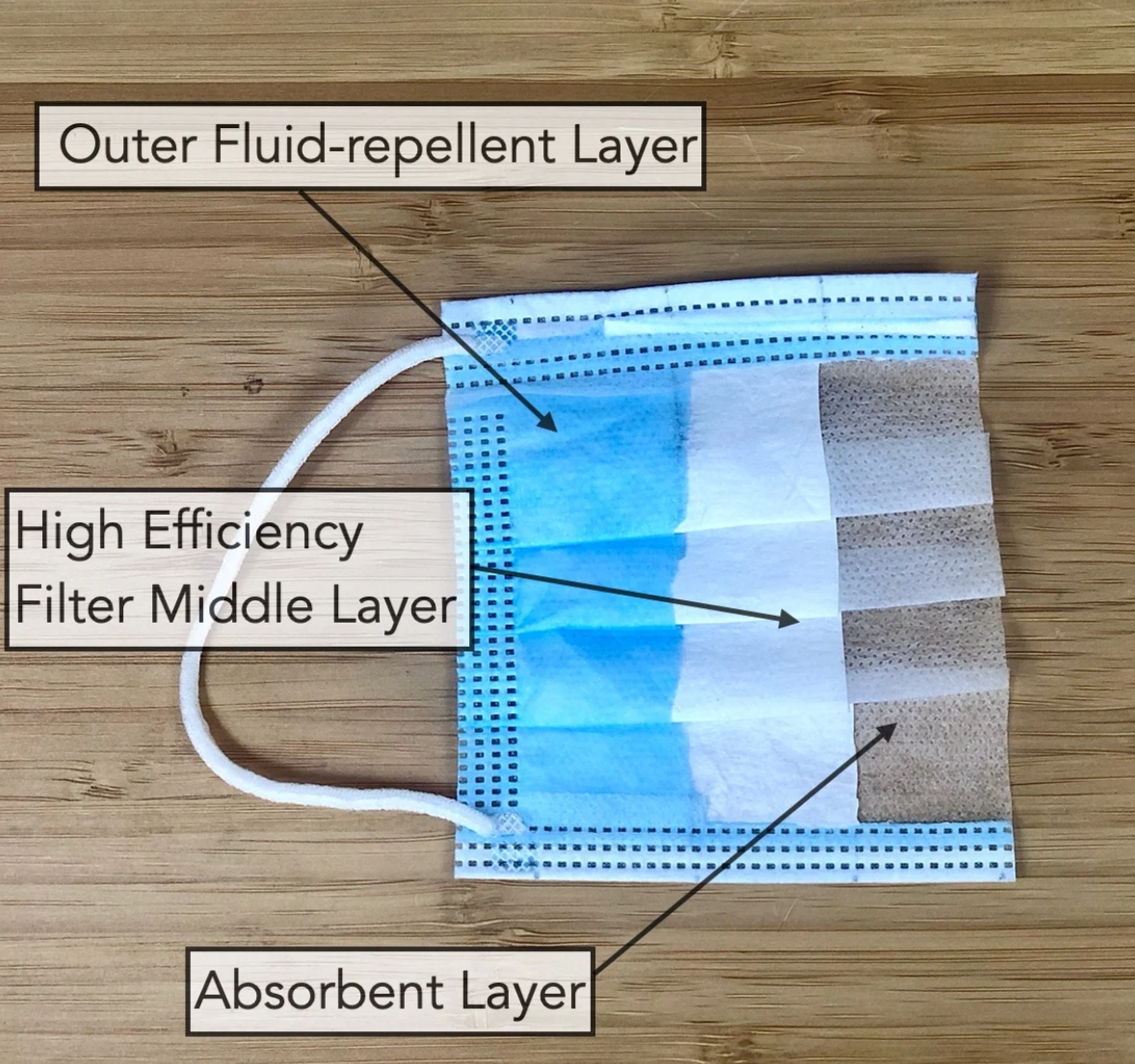 If you cut open your surgical mask, you should be able to see three distinct layers. Via.
If you cut open your surgical mask, you should be able to see three distinct layers. Via.
Some surgical mask manufacturers produce masks which are tested and certified according to the European standard, EN 14683.
Other mask certification include American standard ASTM F2100 and Chinese standard YY 0469.
Surgical masks which are certified according to these standards are typically guaranteed to have at least 95 per cent bacterial filtration efficiency — which is generally good enough for members of the public.
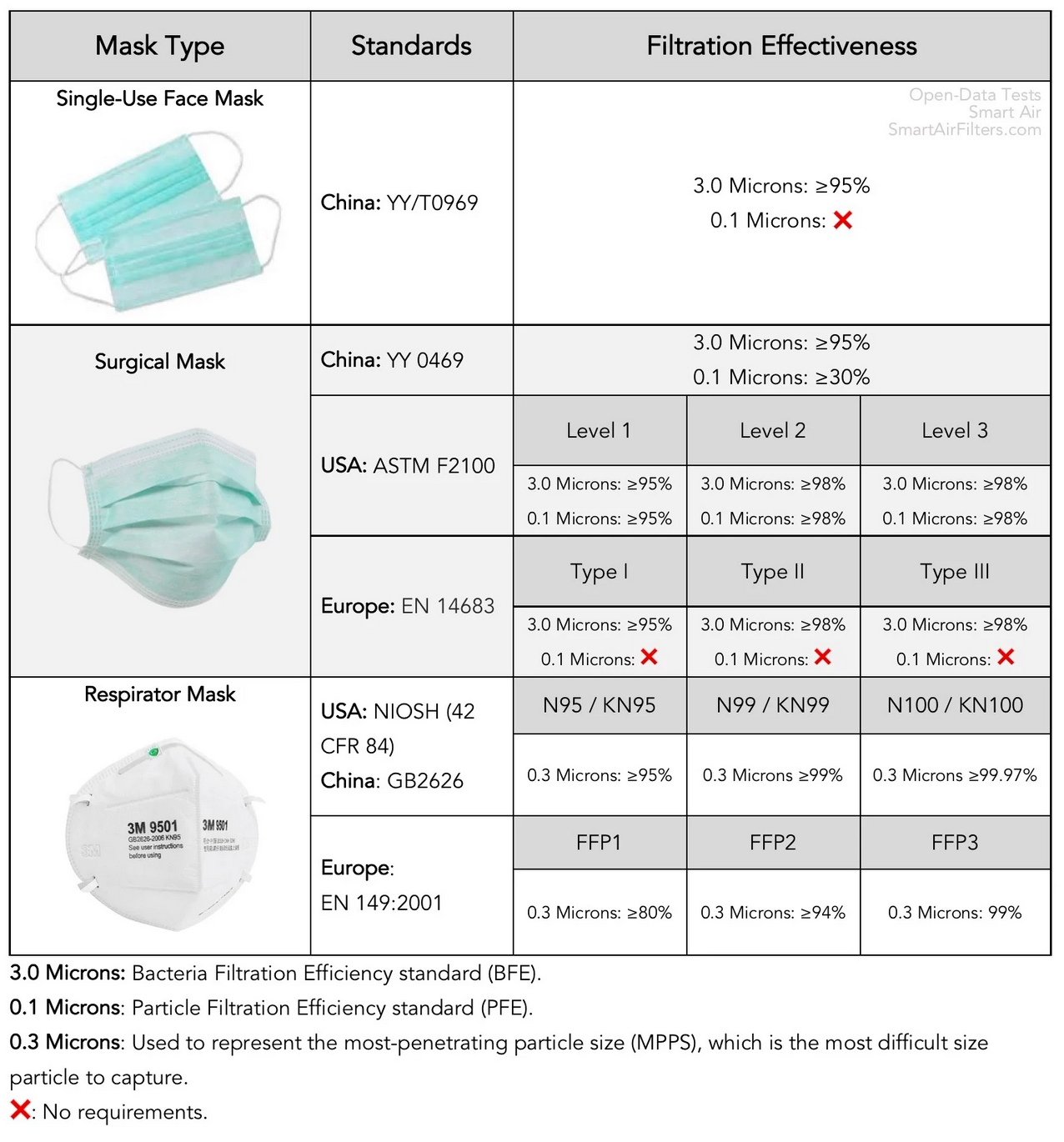 Via smartairfilters.com
Via smartairfilters.com
If you really want to protect yourself, you can also look for an N95 surgical respirator, which according to this nifty guide by the Health Sciences Authority, provides the protection of both a surgical mask and N95 respirator.
It can be used to block large droplets of body fluids as well as very small particles like fine aerosolised droplets. Look for those which are certified by the U.S. National Institute for Occupational Safety and Health (NIOSH).
Avoid single layer masks because these aren't strong enough to filter infectious droplets.
You'll also want to avoid masks with valves because, even though it helps you breath easier, the valves can allow infectious droplets to pass through.
Mothership Explains is a series where we dig deep into the important, interesting, and confusing going-ons in our world and try to, well, explain them.
This series aims to provide in-depth, easy-to-understand explanations to keep our readers up to date on not just what is going on in the world, but also the "why's".
Top image by Gayatri Malhotra on Unsplash
If you like what you read, follow us on Facebook, Instagram, Twitter and Telegram to get the latest updates.
